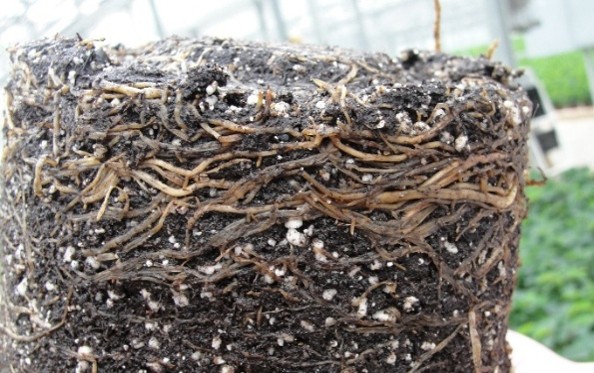Staying Ahead of Cool-Season Diseases in Ornamental Greenhouses
-
November 10, 2025
-
Share this article:
- SHARE:
While this fall season started off with warm temperatures in parts of the U.S., cooler weather and overcast conditions have likely arrived where you live. As the weather shifts, greenhouses experience lower light levels, colder temperatures and higher humidity, creating the perfect environment for many pathogens to establish and spread. To protect high-value ornamental crops from cool-season diseases, it’s critical to implement an agronomic program featuring a strategic rotation of fungicides.
Know the SignsThere are a few prominent cool-season diseases that pose serious threats to ornamental crops in greenhouses and nurseries, such as Botrytis and
Pythium spp.
Botrytis is a persistent late-season disease that can impact crops from propagation through shipment. This destructive pathogen colonizes living and dead plant tissue, making it especially difficult to manage.
When scouting, watch for early signs of infection:
 |
| Botrytis on gerbera, Rechcigl |
- Small, light brown spots or tiny flecks on flowers
- V-shaped, tan-brown lesions on foliage
- Sunken, discolored cankers on stems
- Brown flower buds that appear water-soaked
- Fuzzy brown or gray spores
- Plant wilting due to stem rot
Pythium spp. is another constant threat, spreading easily through greenhouses during the fall and winter, especially when growing media remains wet for extended periods. When scouting, examine plants carefully and be aware of the warning signs such as:
- Seedlings that collapse shortly after germination or appear nutrient deficient and stunted
- Transplants and unrooted cuttings developing lower stem rot
- Yellowing of lower leaves
 |
| Pythium root rot on poinsettia, Rechcigl |
- Plants showing occasional wilt even when the media feels moist
- Roots that appear soft, brown or water-soaked, allowing for the outer portion of the root to be easily removed, leaving behind the stringy vascular core of the root
Take Preventive ActionSince certain pathogens, like Botrytis, have a high potential to develop fungicide resistance, it’s important to combine strong cultural practices with a carefully designed fungicide rotation.
Cultural tips to help prevent infection include:
- Cleaning the benches and growing areas of debris and sanitizing between crops
- Providing appropriate plant spacing to allow for good air movement
- Elevating pots in low areas where water may pool
- Keeping the humidity low by heating or venting
- Immediately removing any diseased plants from the area to limit spread
In addition, fungicide programs should incorporate product rotation to ensure broad-spectrum, reliable control.
Postiva™ fungicide offers two modes of action for long-lasting protection. Rapidly absorbed into plant tissue, it creates a rainfast barrier that prevents infection and disease progression. It also serves as an excellent rotation partner with
Palladium® fungicide, another dual-mode product that expands spectrum control and strengthens resistance management against Botrytis.
For pathogens like
Pythium,
Mural® fungicide delivers systemic, protective activity and complements products such as
Subdue Maxx® fungicide for broader control of common root and stem diseases, while also providing added plant health benefits.
Learn more about agronomic solutions at GreenCastOnline.com/Ornamentals.
All photos are either the property of Syngenta or are used with permission.
© 2025 Syngenta. Important: Always read and follow label instructions. Some products may not be registered for sale or use in all states or counties and/or may have state-specific use requirements. Please check with your local extension service to ensure registration and proper use. GreenCast®, Mural®, Palladium®, Postiva™, Subdue Maxx® and the Syngenta logo are trademarks of a Syngenta Group Company. All other trademarks are the property of their respective third-party owners.